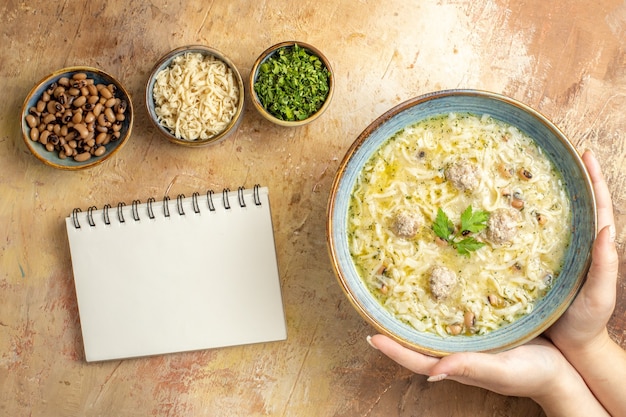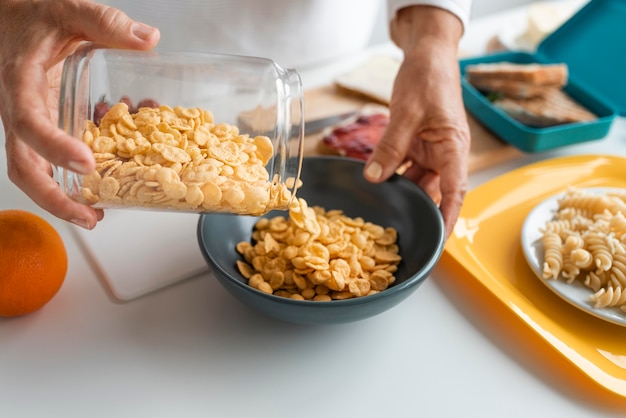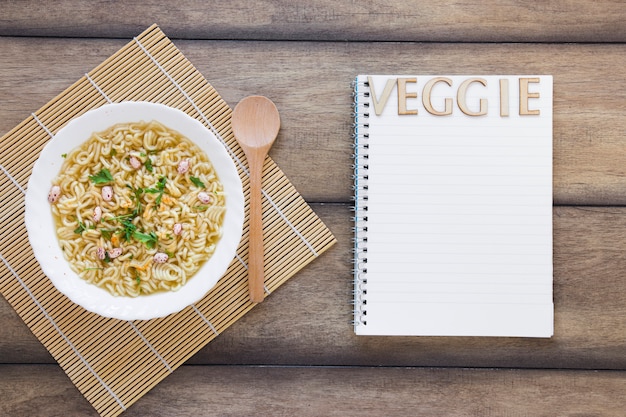I'm a self-proclaimed orzo enthusiast! Its versatility knows no bounds - it's equally at home in salads, soups, bakes, you name it! But honestly, nailing the perfect cooking time for this little pasta gem can be a real head-scratcher. I've had my fair share of mushy orzo disasters, and on the other side of the spectrum, there's that dreaded undercooked experience that's more like chewing on tiny pebbles. Not exactly a culinary triumph.
So, I've decided to dedicate this article to all my fellow orzo lovers out there, to help us conquer this cooking time conundrum once and for all. We'll explore the various factors that influence orzo's cooking time, uncover the optimal way to cook this little pasta, and I'll be sharing my personal tips and tricks along the way. Get ready for a delicious adventure, folks!
(Part 1) Delving into the World of Orzo

Let's start by getting better acquainted with our star ingredient. Orzo, for those unfamiliar with this pasta darling, is a type of Italian pasta shaped like tiny rice grains. It's adorable, it's versatile, and it's brimming with culinary potential!
Orzo's Rich History and Origins
orzo pasta has a fascinating backstory. It's believed to have originated in Greece, where it's known as “κριθαρ??κι” (kritharaki), which translates to "little barley." The ancient Greeks used to make this pasta with barley, giving us a glimpse into orzo's ancient history. It's a true classic!
Over time, orzo journeyed across the Mediterranean, finally making its way to Italy, where it became a cherished staple in their cuisine. I reckon it's because orzo is so incredibly adaptable. It's the chameleon of the pasta world, perfectly embracing the flavours of whatever you pair it with.
Exploring Orzo's Texture and Size
Orzo boasts a delightful chewy texture. It's not too firm, not too soft - just right! This makes it an ideal ingredient in countless dishes. Its size is equally perfect - small enough to soak up the deliciousness of sauces and broths, but large enough to hold its own.
I can't help but adore its little shape. It reminds me of miniature rice grains, making it ideal for dishes where you crave a consistent texture throughout.
(Part 2) The Science Behind Perfect Orzo Cooking

Now that we've established our love for orzo, let's get into the nitty-gritty – the science behind cooking this delightful pasta. And trust me, it's not as daunting as it sounds.
Boiling Water: The Key to Success
Boiling water is your absolute best friend when it comes to cooking pasta, orzo included. Why? Because it ensures even and rapid cooking. The heat from the boiling water penetrates the pasta, breaking down the starch molecules. This is how we achieve that heavenly, tender texture we all crave.
Imagine it like this: boiling water acts like a big, hot bath for your orzo, gently transforming it into perfect little pasta bites. Ensure your water is at a rolling boil before adding your orzo. This ensures immediate cooking and uniform doneness for every single piece of orzo.
Starch Release: A Culinary Magic Trick
Here's another fascinating fact about pasta: as it cooks, it releases starch. This starch is what gives your pasta sauce that luscious creaminess and helps it cling to the noodles. The more starch released, the thicker and richer your sauce becomes.
But overcook your pasta, and you'll unleash a starch overload, resulting in a sauce that's too thick and clumpy. This is why mastering that perfect cooking time is so important!
The Power of Salt: More Than Just Flavor
We can't talk about pasta without acknowledging the vital role of salt. Salt isn't just for flavor, my friends. It actually helps season the pasta from the inside out. Adding salt to your boiling water raises its boiling point, leading to more even cooking. It also infuses the pasta with a delightful salty flavour.
(Part 3) Factors Influencing Orzo Cooking Time: A Deeper Dive

We've covered the basics of cooking orzo, but now let's delve deeper into the factors that can influence cooking time. This is where things get a bit more personalized. Every batch of orzo is unique, so we need to be flexible and adapt.
1. Brand and Shape: The Pasta's Identity Matters
The brand of orzo you choose can affect cooking time. Different brands utilize slightly different recipes and production methods, leading to variations in cooking time. So, if you're switching brands, it's a good idea to check the package for their recommended cooking time.
Even within the same brand, different orzo shapes can have different cooking times. For example, larger or thicker orzo might take a little longer to cook through.
2. Amount of Orzo: More Pasta, More Time
The amount of orzo you're cooking also plays a role. A small batch will cook faster than a big potful. This is because the pasta has more room to move around in the water and cook evenly.
So, if you're making a large pot of orzo, you might need to add a few minutes to the cooking time. Just be sure to check your pasta frequently to avoid overcooking.
3. Altitude: The Impact of Thin Air
Believe it or not, even altitude can influence your orzo cooking time. This is because water boils at a lower temperature at higher altitudes. So, if you're cooking at a high altitude, you might need to add a couple of minutes to the cooking time.
It's best to check the package for any altitude-specific instructions. But if you're ever unsure, it's always a good idea to check your pasta a bit earlier than you think you should.
(Part 4) The Art of Cooking Perfect Orzo: A Step-by-Step Guide
Now that we've explored all those influencing factors, let's get to the good stuff – how to cook the perfect orzo. I'm going to break it down into simple steps, so you can whip up a delicious batch in no time.
1. Bringing a Pot of Water to a Rolling Boil
Start by bringing a large pot of water to a rolling boil. Ensure you have enough water to generously cover the orzo, allowing for even cooking throughout.
2. Salt: The Essential Seasoning
Once the water is boiling, add about a tablespoon of salt. This will season the pasta and contribute to more even cooking.
3. Adding Your Orzo
Now, it's time to introduce your orzo. Gently pour it into the boiling water, stirring to prevent clumping.
4. Stirring for Even Cooking
Keep a watchful eye on your orzo and stir it occasionally to prevent sticking to the bottom of the pot. You want it to swim freely in the water!
5. Checking for Doneness: The Taste Test
After about 8-10 minutes, start checking your orzo for doneness. The best way is to scoop a small amount of orzo with a slotted spoon and taste it. It should be cooked through but retain a slight bite.
6. Draining the Orzo: Preserve That Starch
Once your orzo reaches the perfect level of doneness, drain it in a colander. Importantly, don't rinse it after draining. This will wash away the starch that helps your sauce cling to the pasta.
(Part 5) Orzo Cooking Time: A Handy Table for Reference
To make things even easier, I've created a handy table with suggested cooking times for orzo. Remember, these are just guidelines, so always check for doneness.
| Amount of Orzo | Cooking Time |
|---|---|
| 1/2 cup | 6-8 minutes |
| 1 cup | 8-10 minutes |
| 1 1/2 cups | 10-12 minutes |
| 2 cups | 12-14 minutes |
(Part 6) Orzo cooking tips and Tricks: Elevate Your Pasta Game
Now that we've got the basics down pat, let's talk about some tips and tricks to take your orzo cooking to the next level.
1. Avoid Overcrowding the Pot
One of the most common pasta cooking blunders is overcrowding the pot. Too much pasta in the pot leads to uneven cooking. Make sure to leave ample space for the pasta to move freely in the water.
2. The Olive Oil Trick
A trick I've learned over time is to add a tablespoon of olive oil to the boiling water. It helps prevent the orzo from sticking together, adding a little lubrication to the pasta party.
3. Pasta Timer: Your Culinary Ally
I'm a huge fan of pasta timers. They're like little lifesavers. They remind you to check your orzo for doneness, saving you from a pot of mushy pasta.
4. pasta water: A Culinary Treasure
Don't discard that pasta water! It's a culinary treasure. You can use it to thicken your sauce. A little bit of pasta water will make your sauce nice and creamy. Remember, a little goes a long way.
5. Experimenting with Sauces: The Flavourful World of Orzo
Orzo is so versatile, you can pair it with almost any sauce. Embrace your creativity! Try it with classic tomato sauce, creamy pesto, or even a spicy arrabbiata sauce. The possibilities are endless!
(Part 7) orzo recipes: A Culinary Inspiration
If you're seeking inspiration, here are a few delicious recipes featuring orzo.
1. Creamy Tomato orzo soup: A Cozy Comfort
This soup is a perfect choice for a chilly day. It's packed with flavour and incredibly easy to make. All you need is chopped tomatoes, onions, garlic, vegetable broth, and a touch of cream. You can even add fresh herbs like basil or oregano for an extra burst of flavour.
2. Lemon Herb orzo salad: A Summer Delight
This salad is light, fresh, and perfect for summer days. It features a vibrant mix of fresh vegetables like tomatoes, cucumbers, and red onions, all tossed in a tangy lemon herb dressing.
3. Baked Orzo with italian sausage: A Hearty Feast
This dish is a hearty and satisfying choice for a family meal. Simply cook some Italian sausage, then toss it with orzo, marinara sauce, and mozzarella cheese. Bake it in the oven until the cheese is melted and bubbly.
(Part 8) The Health Benefits of Orzo: A Nourishing Choice
We've talked about how delicious orzo is, but let's not forget its health benefits. Orzo is a good source of carbohydrates, providing your body with energy. It's also a good source of fiber, helping you feel full and satisfied.
For those seeking gluten-free pasta options, you can find gluten-free orzo at most grocery stores. Just check the packaging to ensure it's certified gluten-free.
FAQs: Your Orzo Questions Answered
I know you're probably bursting with questions about orzo. Let's tackle those queries!
1. Can I Cook Orzo in the Microwave?
I wouldn't recommend it. microwave cooking isn't the optimal way to cook pasta. It can lead to uneven cooking and a mushy texture. Stick to the stovetop or a pot on the hob for the best results.
2. Can I Freeze Cooked Orzo?
Absolutely! You can freeze cooked orzo for up to 3 months. Just make sure it's completely cooled before freezing. When you're ready to use it, thaw it in the refrigerator overnight, then reheat it in the microwave or on the stovetop.
3. What Are Some Good Substitutes for Orzo?
If you're out of orzo, you can use other small pasta shapes as substitutes. Some good options include:
- Couscous
- Rice
- Penne
- Rotini
4. Can I Cook Orzo in a pressure cooker?
You can cook orzo in a pressure cooker, but be careful, as it will cook much faster than on the stovetop. Check the manufacturer's instructions for your specific pressure cooker and reduce the cooking time accordingly.
5. How Do I Know If Orzo is Overcooked?
Overcooked orzo will be mushy and fall apart when you try to scoop it out of the water. It will also lose its distinct shape. If your orzo is starting to get mushy, drain it and rinse it with cold water to stop the cooking process.
There you have it! Your ultimate guide to cooking orzo. Remember, it's all about finding that perfect balance between firmness and chewiness. Once you've mastered the art of cooking orzo, you can unleash your culinary creativity and whip up countless delicious dishes. Happy cooking, everyone!
Everyone is watching

How to Cook Frozen Lobster Tails Perfectly: A Step-by-Step Guide
RecipesLobster. Just the word conjures up images of lavish meals, special occasions, and a taste of luxury. But let's...

Pigs in a Blanket Cooking Time: How Long to Bake for Perfect Results
RecipesAh, pigs in a blanket. Just the name conjures up images of those delightful little parcels of crispy pastry en...

Pork Fillet Cooking Time: How Long to Cook It Perfectly
RecipesPork fillet, or tenderloin as it's sometimes called, is a real favourite in our house. It's so versatile, and...

The Ultimate Guide to Tender, Juicy Pulled Pork
RecipesRight, let's talk pulled pork. It's one of those dishes that just screams "comfort food," doesn't it? I mean...

The Ultimate Guide to Cooking Sweet Potatoes: From Roasting to Mashing
RecipesSweet potatoes. Just the name conjures up images of warm, comforting dishes, bursts of vibrant color, and a to...
